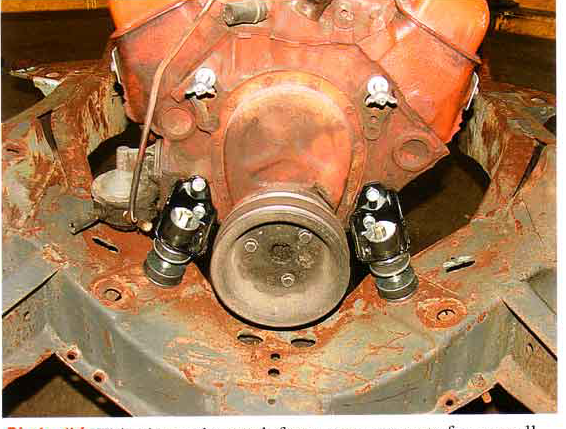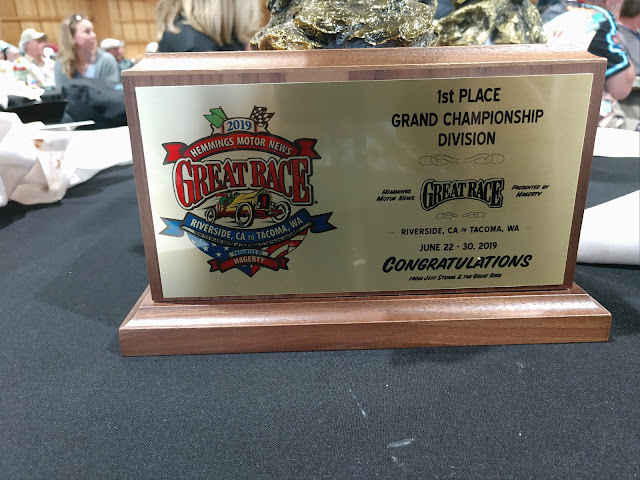Oh No...! Another Lecture on Ground!!
I know what you are thinking, yet another lecture on ground, and I have heard it all before, so I will just skip this one. Well before you wander off, here are some real life examples of what can happen without a properly grounded electrical system. If you have read thru most of the tech articles here you already know the importance of a good ground. Here are a few real life adventures that show you that a lack of a good ground affects things in a way that you would not expect. Read on...
You know by now that the ground path back to the battery is just as important as the current path from the battery to the accessory. The ground path back to the battery typically travels thru the frame which is likely painted, rusty, greasy, or any combination thereof. Any of the above named... which are not good conductors of electricity, will restrict the flow of current back to the battery.
Then there are the built-in obstacles like rubber engine mounts, rubber body mounts, and the engine accessories bolted to a painted or rusty engine block all of which can cause high resistance otherwise known as high electrical friction within the electrical circuits, as the current tries to find an electrical path back to the battery.
So why does this matter? Electricity is lazy and will find and follow the easiest path back to the battery. That path might include thru the cooling system which can damage parts inside of your transmission, especially automatics, so if you are having repeated transmission failures of small internal parts check for voltage present in your coolant which is a sign of a poor ground path back to the battery.
Not being selective, the return ground path back to the battery might include things like throttle return springs and the like, which is pretty scary when you think about it. Open up the hood some evening after dark and with the engine running look for glowing red/orange throttle return springs and arcing between plug wires and engine block, or any stray voltage. You should NOT see any open voltage anywhere.
If you have an overdrive... the ground is especially important. Ideally the overdrive transmission will be grounded as it is bolted to the engine block which you assume is also grounded to the frame. But remember there are also rubber motor mounts and rubber transmission mounts and the majority of your overdrive transmission is electrical. So if thinks are not working the first place to start is the ground. It's simple and won't cost you much.
I had a customer recently experience this very situation where his overdrive would only work interment. He tried everything to fix it, even swapping around his spare overdrive solenoid and relay along with his kick down switch and nothing seemed to make any difference. I told him to add a ground strap to his transmission and ground it to the frame making sure he had a clean metal to metal connection. Bingo his overdrive now works like it is brand new and shifts better than it ever has. His problem was a lack of ground.
Electrolysis destroyed these Aluminum Cylinder Heads...
Having the return ground path travel back thru the cooling system is also not a good plan especially if you have aluminum cylinder heads. The electrolysis created as the current travels thru the aluminum heads can destroy the aluminum heads within a short period of time. Now that I have your attention you want to know how to check your cooling system for electrolysis.
How To Check For Electrical Current Inside Of The Cooling System
First, remove the radiator cap carefully when the engine is warm (thermostat open) and engine idling. You want to set your voltmeter to the zero to ten scale. Insert the red lead of the voltmeter into the engine coolant making sure to NOT touch the metal of the radiator. Ground the black lead to a good ground location.
You want to check the liquid coolant only. If you have a reading greater than 0.10 you have electrical current flowing thru the cooling system. One of the worst cases I saw was a reading of 0.90
which means there was more than one source of battery ground not getting back to the battery.
Once you identify your reading you need to find the source of the stray ground. Typically it will be from an added on accessory like an engine cooling fan, or accessory spotlight, or fog lamps, and not a factory-installed accessory.
Your job is to turn on each of the accessories one at a time till you find the one that makes the reading drop. If your reading is high there is likely more than one accessory that is at fault. The fix is to make sure there is a clear and direct path back to the battery. A remote Battery Stud works ideal in this situation. You can ground more than one accessory directly back to the battery to insure everything works as it is supposed to.
A Remote Battery Stud can be used to power and ground all types of accessories back to the battery. As shown here you can attach more than one accessory to a Remote Battery Stud.
And The Starter...
This ground thing happens in starter circuits also which is why I tell you to use one gauge cables on both 6 and 12-volt applications and to always ground the starter at a starter mounting bolt and not to the frame or engine block as even the factory did. You can lose up to 40 percent of your cranking power from a poor ground in the starting circuit.
Always remember this... All batteries are at least 650 cranking amps and your starter should only need 150 amps to crank over the engine so if the engine cranks slowly or not at all that tells you the 650 amps stored in the battery is not getting delivered to the starter...and what has that job...THE BATTERY CABLES...and where is the ground cable connected and how far away from the starter is that? You want to have a DIRECT path between the starter and the battery! If you do that your antique vehicle will start even on 6-volts like a modern 12-volt.
So in summary you need to look carefully at the ground path back to the battery of all your accessories. Once you establish a good ground path all of your accessories will work better. You can be proud you fixed your grounds with such little effort on your part. Once you get things all fixed share your knowledge with your friends who no doubt struggled like you did before you got educated.





























































